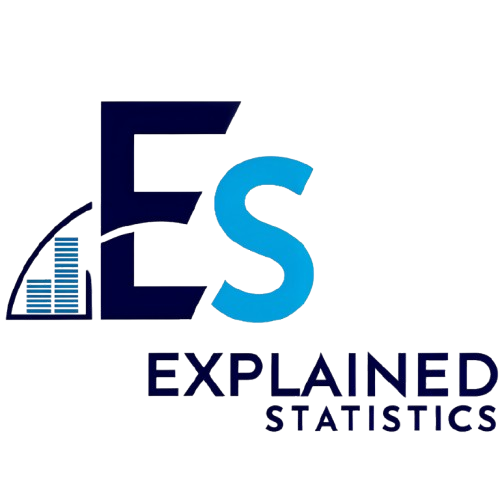Introduction
Combined Statistical Areas (CSAs) are essential geographic entities in the United States. They help us understand complex demographic patterns and social dynamics. But what exactly are CSAs? Think of them as the ultimate neighborhood watch—bringing together nearby metropolitan and micropolitan regions based on commuting ties and shared economic interests.
Why should you care about CSAs? For businesses, policymakers, and researchers, CSAs offer invaluable insights. They help identify market trends, resource allocation, and the social fabric of regions. Understanding these areas can lead to smarter decisions and strategies.
This article will unpack the structure and definitions of Combined Statistical Areas. We’ll provide examples and highlight their applications in various fields. Whether you’re a business owner or a curious researcher, this guide will shed light on the significance of CSA maps.

To deepen your understanding of American geography, consider the Atlas of the United States: A Comprehensive Guide. It’s a great resource for anyone looking to explore the intricacies of U.S. geography.
What are Combined Statistical Areas?
Definition and Purpose
So, what are Combined Statistical Areas? Simply put, CSAs are geographic regions defined by the Office of Management and Budget. They consist of two or more adjacent Metropolitan Statistical Areas (MSAs) and Micropolitan Statistical Areas (µSAs). These areas are intertwined by significant social and economic ties, particularly through commuting.
An MSA is a region that includes at least one urban core with a population of 50,000 or more. On the other hand, a µSA has an urban core with a population ranging from 10,000 to 50,000. Sounds straightforward, right? But here’s the catch: CSAs can encompass a mix of both MSAs and µSAs.
CSAs serve critical purposes in demographic data collection and analysis. By grouping these statistical areas, researchers can analyze commuting patterns, economic interactions, and population dynamics more effectively. They provide a clearer picture of how people live and work in interconnected areas, enhancing our understanding of regional economies.
For instance, the Atlanta-Sandy Springs-Alpharetta CSA combines several MSAs and µSAs in Georgia. It captures the bustling commuter flow of residents moving in and out of the city. This information is gold for businesses looking to understand customer behaviors or for city planners aiming to improve infrastructure.

Speaking of urban planning, if you’re interested in diving deeper into this field, check out Urban Planning Books. They offer valuable insights into the complexities of city development and management.
CSAs also play a vital role in government and policy-making. They assist in allocating resources, planning services, and implementing policies that align with the needs of the population. By recognizing the nuances of these areas, policymakers can create more effective strategies tailored to diverse communities.
In summary, Combined Statistical Areas are more than just lines on a map. They represent the interconnections of urban and rural life, helping us grasp the complexities of modern demographics. Understanding CSAs empowers businesses, researchers, and policymakers to make informed choices that impact communities positively.
As we navigate through this article, we’ll highlight the historical context of CSAs, how they’re defined, and the latest trends shaping these vital areas. Keep reading to discover the fascinating world of Combined Statistical Area maps!
Historical Context
Background
The journey of Combined Statistical Areas (CSAs) began as a response to the need for more refined demographic classifications. Before CSAs, the U.S. Office of Management and Budget (OMB) primarily focused on Metropolitan Statistical Areas (MSAs) and Micropolitan Statistical Areas (µSAs). MSAs required a population of at least 50,000, while µSAs catered to areas with populations between 10,000 and 50,000. However, these definitions fell short in capturing the full scope of regional interactions.
In 2003, the OMB introduced Core-Based Statistical Areas (CBSAs), which encompassed both MSAs and µSAs. This move marked a significant step toward understanding how adjacent areas function together, especially in terms of commuting and economic ties. It wasn’t long before the need for an even broader classification emerged, leading to the development of CSAs.
CSAs were designed to group together adjacent CBSAs that exhibited substantial commuting patterns. This classification acknowledged the interconnectedness of urban and rural regions, providing a more comprehensive view of demographic trends.

Changes Over Time
Since their inception, CSAs have undergone various revisions to reflect changing population dynamics. Notably, the definitions evolved significantly from 2003 to 2023. In 2013, the OMB made notable updates to the CSA definitions to incorporate the latest census data. This included refining the criteria for adjacency and commuting patterns, ensuring that CSAs accurately represented real-world relationships between communities.
By July 2023, the landscape of CSAs had further transformed. The OMB announced new delineations that included 184 defined CSAs across the nation. These changes highlighted areas that gained or lost their CSA status based on updated population data and commuting trends. For example, some areas previously classified as MSAs were demoted, while others were promoted to CSA status, reflecting shifts in demographic patterns.
Overall, the evolution of CSAs mirrors the dynamic nature of American communities, adapting to the needs of researchers, businesses, and policymakers. Understanding these historical shifts is essential for anyone looking to navigate the complex world of demographic analysis.
The Role of the U.S. Census Bureau
Data Collection
The U.S. Census Bureau plays a crucial role in defining and updating Combined Statistical Areas (CSAs). Each decade, the Census Bureau conducts a comprehensive survey, collecting data from households across the nation. This information is essential for identifying how communities interact, commute, and share economic ties.
The Census Bureau analyzes commuting patterns and economic links between urban and rural areas. This analysis helps to define CSAs, ensuring that they accurately reflect how people live and work. As population demographics shift, the Census Bureau updates these definitions to maintain relevance. They also collaborate with the Office of Management and Budget (OMB) to reflect changes in the social and economic landscape.

Reference Maps
Finding CSA maps and data is easier than ever. For starters, the U.S. Census Bureau provides a dedicated webpage featuring detailed maps of CSAs. You can access these maps here. This page includes a comprehensive overview of Metropolitan and Micropolitan Statistical Areas, along with the latest CSA delineations.
Additionally, several platforms like Mapline offer interactive mapping tools. These platforms allow users to visualize and analyze CSA data effectively. Whether you’re a researcher, business owner, or just a curious individual, these resources provide a wealth of information at your fingertips.
Viewing and Analyzing Combined Statistical Area Maps
How to Access CSA Maps
Digital Resources
Accessing CSA maps has never been simpler. The U.S. Census Bureau is your go-to source for CSA maps and data. They provide downloadable files and interactive maps that showcase the latest delineations. You can find these invaluable resources on their official website.
Mapline is another excellent option. This platform allows users to create custom maps, incorporating CSA data along with demographic insights. It’s great for businesses looking to visualize market areas or for researchers aiming to analyze trends.
Other useful sources include local government websites and GIS platforms. Many states maintain their own geographic information systems that include CSA data. If you’re interested in GIS software, consider exploring Geographic Information System (GIS) Mapping Software. It’s essential for those serious about mapping and analysis.

Viewing Tips
Interpreting CSA maps can feel like learning a new language. Here are some handy tips to help you decode these maps effectively:
- Familiarize Yourself with the Legend: Every map comes with a legend. This explains the symbols and colors used, helping you understand what each area represents.
- Use Adobe Reader: For optimal viewing, download your CSA maps and open them in Adobe Reader. This software allows for better navigation and zooming features.
- Adjust Map Settings: If the lines appear too thin or difficult to see, adjust the settings in Adobe Reader. Uncheck the “Enhance thin lines” option under the Preferences menu for clearer visibility.
- Look for Additional Information: Many CSA maps provide metadata or footnotes that give context to the data. This can include population estimates, economic data, and more.
- Cross-reference with Census Data: Utilize accompanying census data to gain deeper insights. This can enhance your understanding of the demographics and economic ties within each CSA.
By following these tips, you’ll be well on your way to mastering CSA map interpretation. Whether for research or business strategies, these maps are powerful tools for understanding the interconnectivity of communities.
Analyzing CSA Maps for Business and Research
Demographic Insights
Combined Statistical Area (CSA) maps are like treasure maps for businesses and researchers. They reveal hidden gems of demographic information. By analyzing these maps, organizations can pinpoint market trends, customer preferences, and local economic dynamics.
Businesses can assess the demographic make-up of potential customers. For instance, a coffee shop chain could analyze the age, income, and commuting patterns within a CSA. This information helps tailor products and marketing strategies to meet local tastes. Imagine serving pumpkin spice lattes in the fall, just in time for hipster Instagram shots!
Researchers also benefit from CSA maps. They can identify socioeconomic trends and how communities interact. For example, a study of CSA demographics might reveal that areas with higher education levels have greater economic mobility. This insight can shape policies and initiatives aimed at uplifting communities.

In short, CSA maps are powerful tools. They bridge the gap between data and decision-making, helping organizations thrive in competitive markets.
Case Studies
Let’s look at some real-world examples of CSA maps in action.
- Retail Expansion: A national retail chain used CSA maps to identify expansion opportunities. By analyzing commuting patterns and demographics, they found a CSA with a growing population of young families. They opened a new store, resulting in a 30% increase in sales during the first year. Talk about a win-win!
- Public Health Initiatives: A public health organization leveraged CSA maps to tackle obesity rates. By examining demographic data, they discovered certain areas lacked access to healthy food options. They partnered with local farmers’ markets to improve accessibility, leading to healthier communities. Now that’s a recipe for success!
These case studies illustrate how CSA maps can drive strategic decisions. Whether it’s for retail, healthcare, or community planning, the insights derived from these maps lead to successful outcomes. Organizations that embrace CSA analysis position themselves for growth and innovation.
Future Projections
Impact of Changes
The recent changes in Combined Statistical Areas (CSAs) could significantly shift demographic trends and economic development across the U.S. As areas gain or lose CSA status, populations may migrate based on new economic opportunities. For instance, regions previously classified as independent may now see an influx of residents seeking employment in newly integrated areas. This can lead to changes in local economies, affecting job markets and housing demands.
Moreover, these shifts may influence policy-making. Local governments might need to adapt their strategies to accommodate growing populations or support declining regions. Understanding these dynamics is crucial for businesses aiming to expand into new markets or adjust their strategies according to demographic changes.

For those interested in presenting maps effectively, consider investing in a Projector for Presenting Maps. It can enhance your presentations and make your data more accessible!
Ongoing Adjustments
It’s essential to remain vigilant about future CSA revisions and trends. As populations fluctuate and commuting patterns evolve, the definitions of CSAs will continue to adapt. Keeping an eye on these updates ensures that businesses, researchers, and policymakers can make informed decisions based on the latest data.
To stay ahead, subscribe to updates from the U.S. Census Bureau and the Office of Management and Budget. Regularly checking reliable sources for changes in CSA designations can provide valuable insights. The ever-changing landscape of CSAs offers opportunities for growth and innovation, but only for those who stay informed.
Conclusion
Summary of Key Points
Understanding Combined Statistical Areas (CSAs) is vital for grasping the complexities of U.S. demographics and economies. CSAs consolidate adjacent Metropolitan Statistical Areas (MSAs) and Micropolitan Statistical Areas (µSAs), creating a clearer picture of social and economic ties. Their definitions have evolved, reflecting changes in population dynamics, commuting patterns, and economic interactions. The recent 2023 revisions, which delineated 184 CSAs nationwide, highlight the importance of adapting to demographic shifts.

Final Thoughts
Utilizing CSA maps can empower individuals and organizations alike. Whether you’re a business owner seeking to understand market demands or a researcher analyzing social trends, CSA maps serve as powerful tools for informed decision-making. They allow for better planning, resource allocation, and strategy development.
Call to Action
We encourage you to explore CSA maps for your local areas. Understanding the demographic data can reveal trends that impact your activities, whether in business, education, or community planning. Dive into the world of CSAs, and let the data guide your decisions!
FAQs
What is the difference between a Metropolitan Statistical Area and a Combined Statistical Area?
Metropolitan Statistical Areas (MSAs) are urban regions with a population of at least 50,000, whereas Combined Statistical Areas (CSAs) consist of two or more adjacent MSAs or Micropolitan Statistical Areas (µSAs) linked by commuting ties. For example, the Atlanta-Sandy Springs-Alpharetta CSA includes multiple MSAs that interact economically.
How often are CSA maps updated?
CSA maps are typically updated with each decennial Census, but revisions can occur more frequently. Factors such as population changes, economic shifts, and commuting patterns trigger updates. The latest major update was announced in July 2023.
Where can I find the most recent CSA maps?
The most recent CSA maps can be accessed through the U.S. Census Bureau’s official website. Other resources include geographic information system (GIS) platforms and local government sites that may provide additional data and insights.
Can businesses benefit from CSA maps?
Absolutely! Businesses can leverage CSA maps to identify target markets, understand customer demographics, and make strategic decisions about expansion or marketing. These maps help businesses connect with the right audience based on regional characteristics.
Are there any limitations to using CSA maps?
While CSA maps are valuable, they have limitations. They may not capture localized trends within larger areas. For example, a CSA may encompass diverse communities, each with unique characteristics. Therefore, additional data may be necessary for a complete understanding of local dynamics.
Please let us know what you think about our content by leaving a comment down below!
Thank you for reading till here 🙂
All images from Pexels




